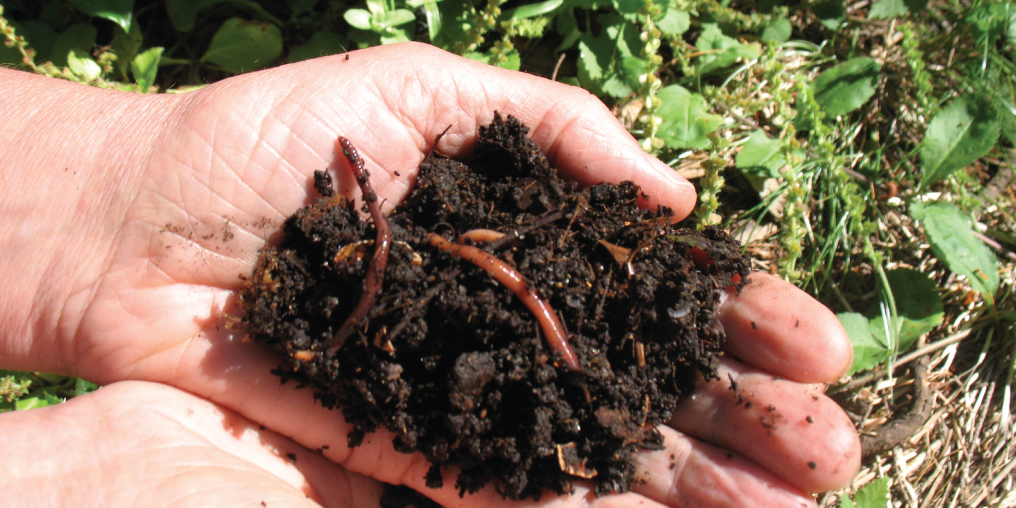Turn waste into earth! Composting completes the life cycle as organic waste becomes humus, and feeds new organic material. Compost will return essential nutrients to the soil to feed plants without fertilizers or pesticides; decrease watering needs and improve drainage; and reduce waste going to the landfill by up to 50%.
LOCATION
Ideally, your compost bin or pile will be close to the source of your materials (usually the kitchen), or right in a raised bed (underneath becomes luxuriously rich soil), which can be moved to a different bed each year. Ensure good drainage under the bin, so there are no puddles. Compost bins do not need to be in the sun as the heat in compost is mainly bacterial, not solar.
PRECIOUS INGREDIENTS
Organic kitchen waste provides a sweet treat for compost bugs. Pair it with old leaves and you have a perfect compost feast. It is best to start a new pile with a layer of carbon-rich brown material, alternate layers with nitrogen-rich green material, and then top with more browns to inhibit flies or smell.
ADD NITROGEN-RICH GREENS
• Kitchen scraps
• Grass clippings
• Coffee grounds and filter
• Yard waste
• Fresh weeds (no seeds)
• Manure from grass-eaters
• Eggs shells, crushed
• Alfalfa meal
ADD CARBON-RICH BROWNS
• Dried leaves
• Straw
• Dried weeds and plants
• Sawdust
• Paper towels
• Bark
• Shredded newspaper or cardboard
Use sawdust or wood chips minimally, as they are quite high in carbon and make poor compost. Toss in a shovel full of soil from time to time as worms need the grit for digestion, and the microbes in the soil will help kick-start decomposition.
KEEP OUT
• BBQ ashes
• Dog or cat feces
• Fat
• Diseased or invasive plants
• Sludge or mud
• Human waste
• Non-biodegradable or toxic materials
KEEP THE BUGS DAMP
A common composting problem in the Comox Valley is dry compost. Worms breathe through their skin, so keep those critters damp. If you see ants, it is too dry. Normal compost does not smell. If it smells, simply add a layer of soil, fork it over, and cover with a high carbon material like old leaves, straw, or shredded paper. The needed decomposing microbes and worms will miraculously appear when the dinner bell has rung.
An exception may be tumbler composters that are not connected to earth. They may need an activator, or worms and more water management. If you have a reasonable mix of carbon and nitrogen materials, you won’t need to fork it over since the bugs will do the tunnelling for you.
PREVENT PESTS
A nicely managed compost pile will not attract pests. In a pile or plastic bin that does not keep out vermin, don’t add attractants such as meat, bread, and dairy. The local metal Speedibin composter is designed to keep out vermin. If you make a homemade composter, wrap it in ¼” metal hardware cloth to dissuade pests. To keep out bears, build your composter out of concrete and rebar or convert an old freezer.
INDULGE YOUR SOIL
In a few weeks or months (depending on the mix) you’ll have some rich black compost, starting on the bottom of the pile. Compost is almost magical when micronutrients become available to plants and they become healthier, and even more colourful.
So don’t let anyone make off with your precious scraps. Instead, nourish your garden!
For a full description of the pros and cons of various composting methods, including worm composting and Bokashi, check out 13 Ways to Compost.





